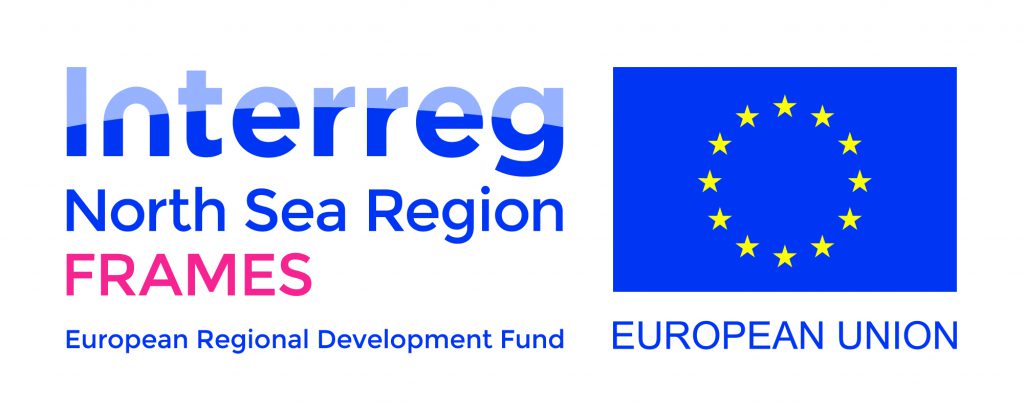
FRAMES – Flood Resilient Areas by Multi-layEred Safety
Project Overview
FRAMES aims on increasing the resilience of areas and communities by working with the Multi-Layer Safety (MLS) Concept.
Climate change causes increasing sea levels and extreme rainfall patterns for areas in the North Sea Region. Traditional, static flood preventions,may not be sufficient anymore in the future. There will never be enough resources to protect every single citizen from flooding, but if we smartly combine resilience measures we can minimise impact. FRAMES shifts to Multi-Layer Safety, smartly combining resilience measures.
Flood resilient areas: improving infrastructure and spatial planning measures
Flood resilient communities: making people and social stakeholders better prepared
Flood resilient authorities: reducing recovery times and increase response capacity
Partners form the UK, Denmark, Belgium, Germany and the Netherlands have designated 15 pilots in areas which are comparable from geographic and demographic view, so monitoring generates new insights and solutions.FRAMES aims on increasing the resilience of areas and communities by working with the Multi-Layer Safety (MLS) Concept.
Climate change causes increasing sea levels and extreme rainfall patterns for areas in the North Sea Region. Traditional, static flood preventions,may not be sufficient anymore in the future. There will never be enough resources to protect every single citizen from flooding, but if we smartly combine resilience measures we can minimise impact. FRAMES shifts to Multi-Layer Safety, smartly combining resilience measures.
- Flood resilient areas: improving infrastructure and spatial planning measures
- Flood resilient communities: making people and social stakeholders better prepared
- Flood resilient authorities: reducing recovery times and increase response capacity
Partners form the UK, Denmark, Belgium, Germany and the Netherlands have designated 15 pilots in areas which are comparable from geographic and demographic view, so monitoring generates new insights and solutions.
The MLS concept is a policy strategy that integrates measures for: prevention, mitigation via spatial planning and emergency response. These layers are traditionally managed by different authorities and sectors, but through MLS, the barriers are lifted and the stakeholders jointly apply the most effective combination of solutions. The MLS principles are being acknowledged by more and more authorities and practitioners across the NSR, but have thus far not been developed in a transnational way.
Project Results
Still in progress but expected results are: Indicator: 1. Resilient authorities: Increase the awareness, capacity and policy drivers for public authorities and practitioners to taking action to reduce the impact of flooding., Target (Unit): 2 Scale increase from baseline; aggregated improved resilience level for 13 flood prone areas measured by increase of average capacity on a scale from 1 to 10., Definition: Scale increase from value X to value Y, determined by an impact estimation survey derived from the Climate Change and Spatial Adaptation Programme of the NL Delta programme. The baseline value X is determined at start and Y the end of the project.,Indicator: 2. Resilient areas: Achieve an improved level of resilience against the impact of flooding in areas., Target (Unit): 2 Scale increase from baseline; aggregated improved resilience level for 13 flood prone areas measured by increase on 1 to 10 scale., Definition: Scale increase from value X to value Y is measured by an impact estimation survey (same method as for result 1); The baseline value X is determined at the start and value Y at the end of the project,Indicator: 3. Resilient communities: Achieve an improved level of resilience against the impact of flooding in at-risk communities., Target (Unit): 432 stakeholders and 2.800 inhabitants have an increased level of self-efficacy and resilience in case of flooding through empowerment of inhabitants and sustainable coalitions., Definition: Increased level of self-efficacy and resilience related to flooding in communities, measured through a baseline, mid-term and final measurement that quantifies community resilience development.,

